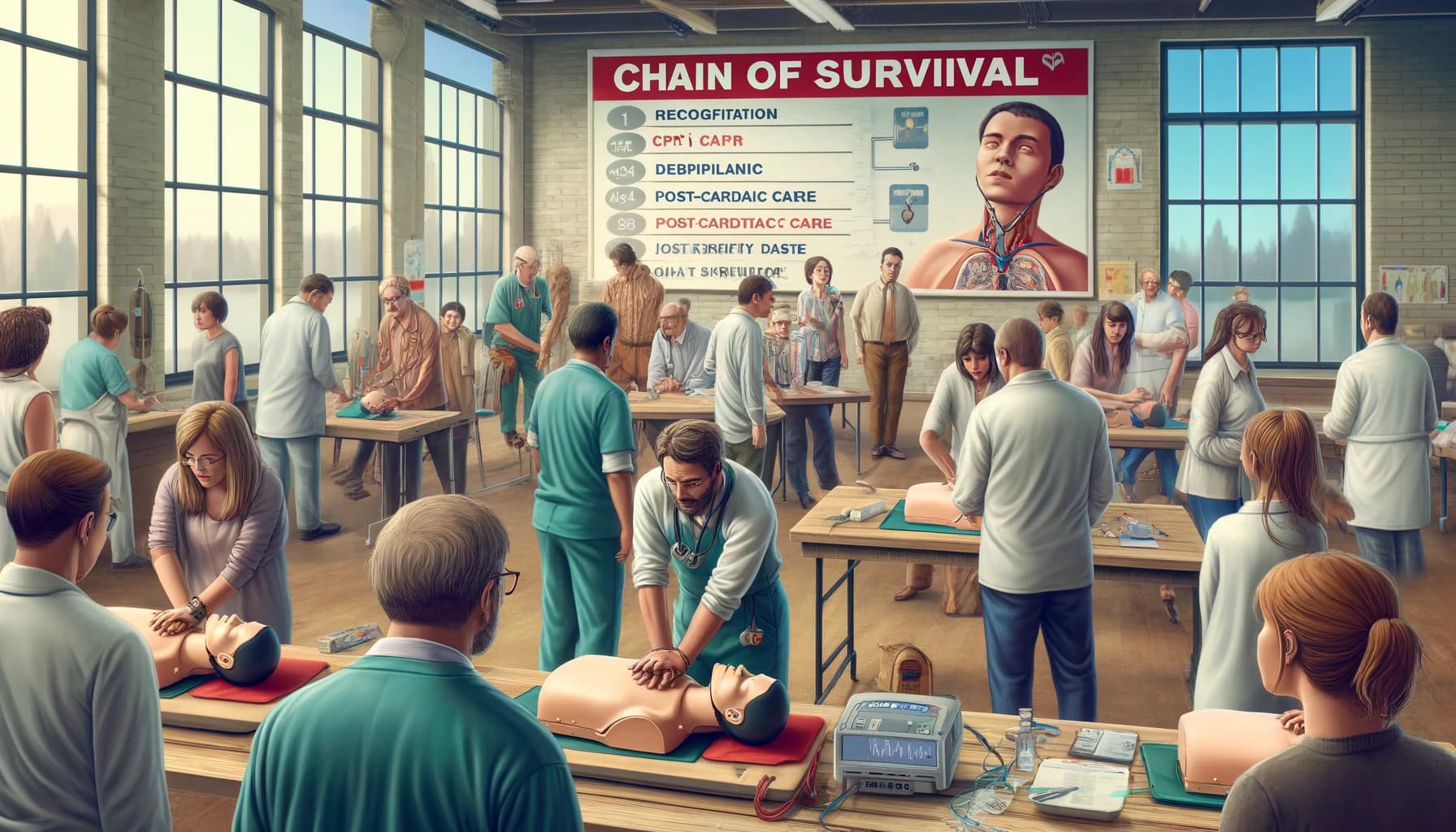Basic Life Support (BLS) is an important area of knowledge in emergency medical response that is essential to saving lives in critical situations such as cardiac arrest, drowning, or any circumstance where a person has stopped breathing or has a heartbeat. In this initial segment of our comprehensive BLS guide, we’ll cover the fundamental aspects of the chain of survival, detailing the importance and execution of each step. As we delve deeper into this vital protocol, we realize that timely and effective intervention can significantly increase the chances of survival after a cardiac emergency.
The chain of survival consists of several important steps that, when performed in rapid succession, significantly increase survival rates. The first step is early recognition of cardiac events and activation of the emergency response system. Immediate recognition facilitates rapid intervention, ensuring that professional help is on the way and bystanders can begin to provide critical first aid. After that, it’s important to perform high-quality cardiopulmonary resuscitation (CPR). This procedure maintains vital blood flow to the heart and brain until normal heart function is restored.
In addition, rapid defibrillation, if necessary, is another key step in this chain. Defibrillation involves the delivery of a therapeutic dose of electrical energy to the affected heart using an automated external defibrillator (AED). This equipment is becoming increasingly available in public places and workplaces, which underscores the importance of making life-saving technology widely available.
In our guide, we will continue to talk about advanced life support provided by arriving emergency services, as well as post-cardiac arrest care, which is vital to stabilizing and optimizing a patient’s chances of recovery. Each component of the chain of survival is interconnected, emphasizing the need for each step to be seamlessly executed to ensure the best possible outcomes in life-threatening situations.
This introduction sets the stage for a more in-depth exploration of each step of the survival chain, emphasizing the importance of public awareness and training in basic life support. Follow our news to learn more about how these critical interventions can make the difference between life and death.
The Chain of Survival
The concept of the chain of survival provides a simple yet effective approach to treat cardiac arrest and other life-threatening medical emergencies. It involves several critical steps: early recognition and call for help, early CPR, rapid defibrillation, effective advanced life support, and post-cardiac arrest care.
Early recognition and calling for help drastically improve survival rates. Recognizing the signs of a cardiac arrest, such as sudden loss of responsiveness and no normal breathing, is crucial. The immediate response, which includes calling emergency services and starting CPR, can double or even triple a victim’s chances of survival. High-quality CPR, provided by a bystander quickly, keeps oxygen-rich blood flowing to vital organs until professional help arrives.
As we delve deeper into the specifics of each step in the chain of survival, we’ll discuss how these interventions have evolved over time and the science that supports their effectiveness. This knowledge is vital not only for medical professionals but also for ordinary individuals, as the initial response in a medical emergency can make the difference between life and death.
Detailed Steps in Basic Life Support
- Early Recognition and Activation of the Emergency Response System
- Immediate High-Quality CPR
- Rapid Defibrillation with an AED
- Effective Advanced Life Support and Post-Cardiac Arrest Care
Each of these steps plays a crucial role in increasing survival rates from sudden cardiac arrests. For more on CPR techniques, see this guide on advanced techniques.
Importance of Timely Medical Response
| Step | Description | Impact |
| Early CPR | Immediate application of chest compressions and rescue breathing. | Can double or triple chances of survival after cardiac arrest. |
| Use of AED | Automatic External Defibrillator used when available. | Significantly improves survival if used within the first few minutes. |
Frequently Asked Questions (FAQ)
What is Basic Life Support?
Basic Life Support (BLS) is a level of medical care which is used for victims of life-threatening illnesses or injuries until they can be given full medical care at a hospital.
Who should learn BLS?
Everyone, especially those who are in frequent contact with the public or in a high-risk environment, should learn BLS.
How often should BLS certification be renewed?
BLS certifications are typically valid for two years, after which renewal through a certified course is required.
For more information on BLS training, visit this resource.
